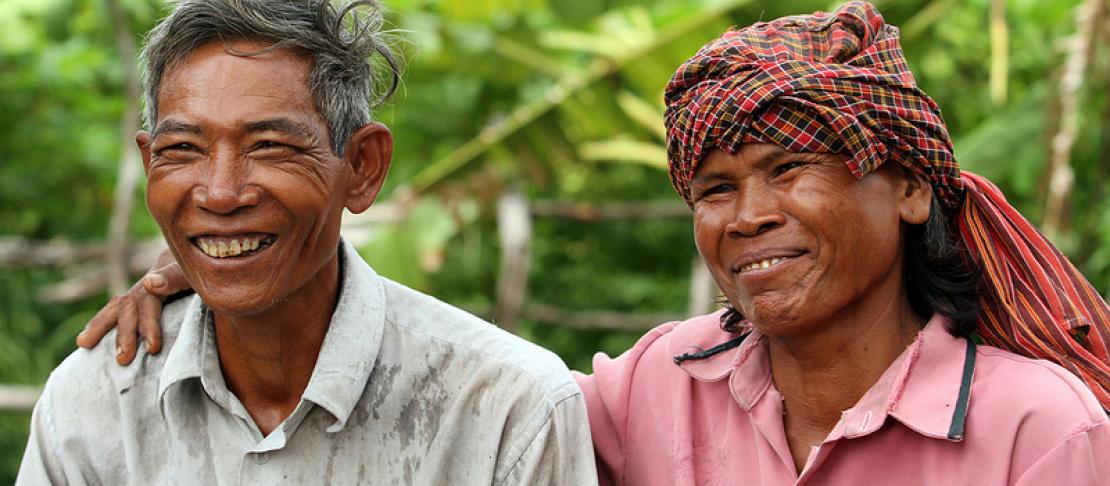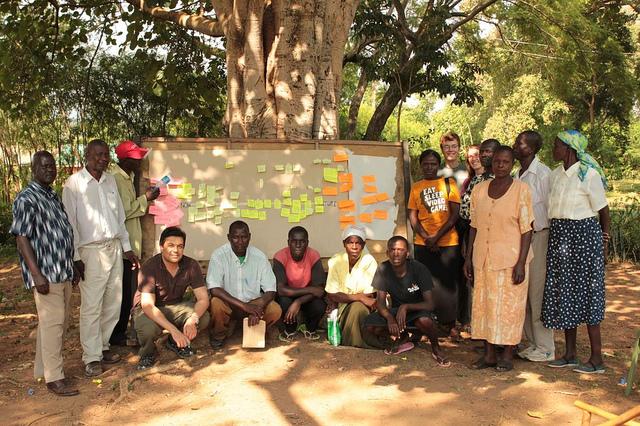Farmers forge ahead as the UNFCCC fails to step up

Agriculture produces over half of the world's non-CO2 greenhouse gas emissions. Its potential for mitigation is huge. Many agricultural groups, insist that agriculture must be included in the United Nations Framework Convention on Climate Change (UNFCCC) if that framework is to have serious impact. As FANRPAN say: "No Agriculture, No Deal".
But mitigation isn't the only answer. Last year, total flows of global climate finance were around USD 364 billion. A staggering 95% of that went to mitigation, leaving only 5% for investment in adaptation (Buchner et al 2012).
The climate is changing now. Adaptation is crucial if we are to have a hope of providing enough food to feed the extra 2.4 billion people who will be alive in 2050 (UN-DESA).
But can we adpat and mitigate at the same time?
"We started out with a hypothesis that there are trade offs between adaptation and mitigation and we were looking for the synergies, for a win-win", explains Andy Jarvis, "after a few years we are struggling to find trade offs. What we have on paper, is a whole range of options which are synergistic."
Andy Jarvis is the Theme Leader working on Long-Term Adaptation at the CGIAR Research Program on Climate Change, Agriculture and Food Security (CCAFS). One day he dreams of retiring from agricultural research to become a farmer; it will be the most rewarding expression of linking knowledge with action. This week, he was in Warsaw at the Global Landscapes Forum, determined to share evidence about climate-smart agriculture, to convince UNFCCC negotiators to give agriculture a seat at the table. A not so rewarding path, at least not this year.
So for now, Jarvis is focusing on getting the groundwork together, identifying adpatation and mitigation strategies, so that when the UNFCCC is ready, the agricultural development sector will be ready to meet it.
But while talk of synergies in research and science and on paper are well and good: how do we actually turn research into action? And what happens on the ground when we do?
Firstly, there is a often a few years' lag between implementing an action and reaping the benefits. What is good for yields and income in the future is not always good for yields and income today. This is indeed a barrier, but it is a barrier that can be overcome through investment and support.
And we aren't just talking about money. Money is important, but what we really need is to invest in people. "We need to put people at the centre of climate-smart agriculture", declared Sheila Sisulu, Ambassador, Special Envoy for the Minister of Agriculture, Forestries and Fisheries, Republic of South Africa.
We need to ensure that the goals of climate-smart agriculture are not just about improving yields and reducing emissions, but are about increasing incomes and levels of education; and reducing hunger, malnutrition and gender inequality.
Both Jarvis and Sisulu were speaking at the Global Landscapes Forum in a session dedicated to hashing out what synergies and trade-offs actually exist between adaptation and mitigation in agriculture, between agriculture and forestry, and practice and policy. The session was co-organised by CCAFS and the Technical Centre for Agricultural and Rural Cooperation (CTA).
How can we use climate smart agriculture to relieve issues like gender inequality?
First, we need to put farmers in control, and as Sisulu pointed out, when we talk about putting farmers in control, we are talking about putting women in control - the majority of farmers are actually women.
This means engaging farmers (and their husbands) as partners in the development of climate smart technologies and practices. We need to talk to people about what they need and want, and get them to test and give feedback to possible solutions along the way. We can't expect them to simply pick up the end product and use it, emphasized Dorcas Robinson, from CARE’s Poverty, Climate Change and Environment Network (PECCN). That is not how the private sector develops products and it should not be how the development sector does either.
Involving farmers in the research process is crucial to developing tools they actually want and neeed. Here, ccafs conducts workshops in kenya to find out the true cost of adpatation & mitigation strategies
Second, we need to improve access. We already have the tools - we need to get them out there. "At this stage what we need is to implement those technologies which have been developed, we need to create the enabling environment for the massive implementation of climate-smart agriculture" said José Campos, Director General of CATIE. This means investing in farmers' capacity through investing in farmer-led organizations and training.
Third, we need to support farmers during the 3 or sometimes 8 years it takes to start seeing pay-offs from being early adopters of climate-smart agriculture.
Again, this might all sound very good in theory, but one still might wonders how this plays out on the ground. What do farmers think about these on-paper synergies that Andy talks about, do they see or care about the co-benefits.
"When a farmer wakes up, they don't think today I am going to do something which is mitigation and tomorrow I will do something which is adaptation - because for the farmer it is a package" explained Dyborn Chibonga, CEO, National Association of Smallholder Farmers (NASFAM). Smart farming is climate smart farming because farming depends on the climate. "It is all about least disturbance to the land, use whatever technologies are available to get the maximum impact out of it. For us, climate-smart agriculture is the way to go because there is no other choice."
This might all sound like a good news story. But it's not.
There is still one very important place where adaptation and mitigation and agriculture aren't coming together very smoothly: policy. "We have side meetings, we are a side show" said Sisulu. Agriculture must be part of the UNFCCC negotiations.
Yes we know technologies and tools exist and yes, we know that synergies exist between some of those tools and technologies, and yes, we also know some of the characteristics of enabling environments that will help get those tools out there. We know that we are on the right track.
But there is a lot we don't know. We don't, for a start, know how much we don't know. First, we need the United Nations to take the lead in identifying knowledge gaps. Then, we need the United Nations to systematically identify synergies and trade-offs between different tools so that we can identify which are the right tools to adapt.
So far, farmers, researchers and the development community have taken the lead. We are conducting our own analyses, have developed our own tools and forged our own partnerships to implement them. What we need now is the next step, an international partnership, lead by the United Nations. As Jarvis said, climate smart agriculture gives low-income countries a chance to put high-income countries to shame, to produce more outputs with fewer inputs and to leave a smaller footprint.
Let's not let climate-smart agricultural policy be another chance for shame.
Learn more about trade offs and synergies in climate smart agriculture:
Climate-Smart Agriculture is improving the lives of millions - here's how
Tools to balance increased food security with decreased emissions
Gender, nutrition- and climate-smart food production: opportunities and trade offs
What really matters to people experiencing the effects of climate change?
More reports from Warsaw:
Can countries bankroll climate adpatation without undermining development?
The serious business of NAP-ing
Which way forward for climate smart agriculture?
References:
Buchner, B., Falconer, A., Hervé-Mignucci, M., Trabacchi, C. 2012. The Landscape of Climate Finance 2012. Climate Policy Initiative, San Francisco, USA.
United Nations Department of Economic and Social Affairs (UN-DESA). 2013. World Population prospects, the 2012 revision, highlights and advance tables. Population Division of the Department of Economic and Social Affairs of the United Nations Secretariat. New York.




